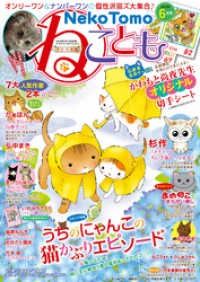- ホーム
- > 洋書
- > ドイツ書
- > Humanities, Arts & Music
- > Music
- > musical equipment
Description
(Short description)
_mit einer bezeichneten und einer unbezeichneten Streicherstimme
(Text)
1849 wandte sich Schumann einer neuen Gattung zu: Werken für Klavier und ein Begleitinstrument. Geradezu systematisch bedachte er die verschiedenen Blasinstrumente mit Fantasiestücken, Romanzen etc. - und sah immer auch eine alternative Streicherbesetzung vor. So erhielt auch jenes Adagio und Allegro op. 70 für Horn und Klavier von Schumann eine Alternativstimme für Violoncello. Clara spielte das neue Werk zusammen mit dem Hornisten E. Julius Schlitterlau, und schrieb danach in ihr Tagebuch: "Das Stück ist prächtig, frisch und leidenschaftlich, so wie ich es gern habe!" Und auch Schumann bekannte begeistert, er habe "Freude daran gehabt" - worin ihm bis heute viele Musiker gefolgt sind._
(Table of content)
Adagio und Allegro für Klavier und Horn, Fassung für Violoncello op. 70
(Short description)
_with marked and unmarked string parts
(Text)
In 1849 Schumann turned to a new genre: works for piano and accompanying instrument. He showered the different wind instruments systematically with Fantasies, Romances, etc. - and always also provided an alternative part for strings. Thus Schumann also wrote an alternative part for his Adagio and Allegro op. 70 for Horn and Piano, namely for the cello.
Clara played the new work together with the horn player E. Julius Schlitterlau, writing afterwards in her diary: "The piece is splendid, fresh and passionate, just as I like it!" And even Schumann admitted enthusiastically that he "had had fun with it" - which is true of many musicians even today._








